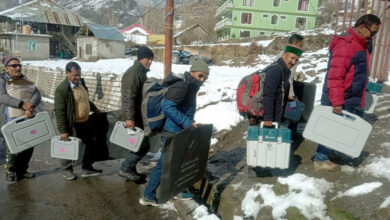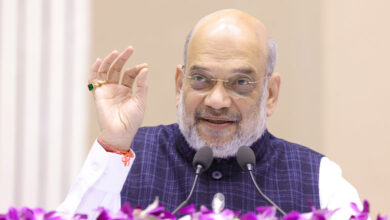
Around 15 per cent of the 16,000 court complexes across the country do not have washrooms for women, reflecting sorry conditions of their toilets, a survey report has shown.
On the lines of Centre’s flagship scheme Swachh Bharat Abhiyan, the Supreme Court, in November last year, had launched the Swachh Nyayalaya project for renovating toilets in court complexes, particularly those in district courts.
Swacch Nyayalaya programme was launched with an aim to improve conditions of washrooms across all the 16,000 court complexes within a span of six months.
However, a survey conducted by Vidhi Centre for Legal Policy, an independent think-tank doing legal research for judicial reforms, revealed the pathetic condition of toilets in the court complexes.
In a report on “Building Better Courts”, which presents and analyses the gaps in the courts’ infrastructure, it has said that 15 per cent of court complexes did not have washrooms for women.
Andhra Pradesh, Assam, Bihar, Chhattisgarh, Jammu and Kashmir, Jharkhand, Maharashtra, Madhya Pradesh, Manipur, Nagaland, Odisha, Punjab, Puducherry, Rajasthan, Tamil Nadu, Uttar Pradesh, Uttarakhand and West Bengal were among those states which court complexes did not have washrooms for women.
“In Andhra Pradesh, 69 per cent court complexes did not have washrooms for women. In Odisha, 60 per cent and Assam, 59 per cent court complexes are facing these conditions,” the report said.
“At a time when there is much discussion on the national Swachh Bharat campaign and its emphasis on building toilets in rural areas and villages, the lack of sanitation and hygiene facilities in the court complexes serves as a stark contrast.
“This also reflects the need for streamlining the functioning of specific schemes and aligning them within the framework of national schemes to ensure better monitoring and accountability,” it added.
The survey also found that less than half of the courtrooms surveyed had washrooms that were fully functioning.
Although washrooms should be present on each floor, the survey found that only 53 per cent of court complexes have met this requirement.
Goa, Jharkhand, Uttar Pradesh and Mizoram had the least percentage of court complexes with functional washrooms.
“None of the court complexes in Goa had fully functional washrooms,” the survey report said, adding that there was no provision for running water or for regular cleaning.
In Jharkhand, 8 per cent of toilets were fully functional while in Uttar Pradesh, 11 per cent, and in Mizoram, it was 13 per cent.
According to the survey, Jharkhand’s capital city Ranchi did not have washrooms for either men or women in the district court complex.
On being asked about the ways in which the services could be improved, 45 per cent respondents said that running water was the key requirement in washrooms followed by the flush facility, which was pitched by 38 per cent, and liquid soap by 35 per cent.















